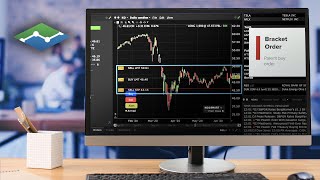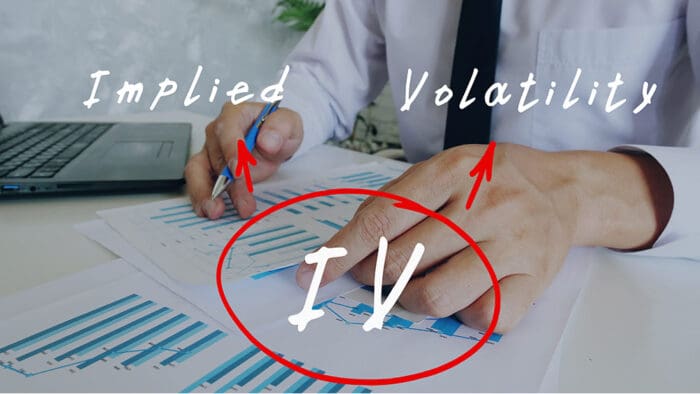By Marilyn Johnson and Manju Boraiah
In today’s edition of On the Trading Desk®, Manju Boraiah, Senior Portfolio Manager and Global Head of Systematic Fixed Income, and Limin Xiao, Portfolio Manager for Systematic Fixed Income, discuss the issue of rising water risks in South Asia, its potential impact on different sectors of the region’s economy, and the framework they use to quantify these risks.
Click here to listen to the podcast
Marilyn Johnson: I’m Marilyn Johnson and you’re listening to On the Trading Desk®.
In this podcast, we’ll be talking about water risk, specifically in South Asia, which is one of the world’s regions that’s facing the most severe challenges coping with water problems.
Our guests today are Manju Boraiah, Senior Portfolio Manager and Global Head of Systematic Fixed Income, and Limin Xiao, Portfolio Manager for Systematic Fixed Income. Manju and Limin, welcome to the program.
Manju Boraiah: Happy to be here, Marilyn.
Limin Xiao: Happy to be here.
Marilyn: So to start off our discussion, Manju, could you give us some background on why water is a top global risk and beyond that, how water risks affect emerging markets?
Manju: I would be happy to. Every year, the World Economic Forum surveys about 650 key decision-makers from the public sector, business, academia, and civil society across the globe to assess the risks facing the world over the decade to come.
These respondents assess the global risks based on two criteria. The first one is the likelihood of its occurrence and the second is the severity of its impact globally.
The results detailing these risks are published annually in their Global Risk Report. And water crisis risk has been consistently ranked in the top five global risks in terms of impact, eight years in a row. So water risk is right up there among climate action failure, weapons of mass destruction, biodiversity loss, and extreme weather.
Also, if you look at the top global risks based on their likelihood of occurrence, it is interesting to note that all the top five risks listed in the section have one common denominator and it is water. The reality is that these top risks are increasingly interconnected in this world today.
For example, failure to mitigate climate change could lead to more extreme weather events, which can in turn lead to the ecosystem collapsing and can exacerbate water and food security, which ultimately can lead to degradation of our society. So the factors driving water risks are complex and vary widely across regions and countries.
And if you focus on emerging markets in particular, the impact of water risk is more acute there because of the broad spectrum of causes, ranging from overuse of water, increasing demand due to population growth, poor water management, lack of infrastructure, and pollution, driven mainly by climate change.
Marilyn: So building off what Manju just said, Limin, can you explain why water risk is such an acute economic and environmental risk factor in emerging markets, especially in South Asia?
Limin: Of course. As Manju mentioned, water crisis is a key risk factor across the globe. The risk and its impact is more severe in emerging markets, especially South Asia, for the following reasons.
First of all, the majority of population growth is and will be in emerging markets. South Asia is one of the most populous regions in the world. This region comprises 2 million square miles, representing about 3.5% of the world’s land surface area. However, the population is about 1.9 billion, approximately 25% of the world, making it the most populous and the most densely populated region in the world. Higher population means higher demand of water and higher potential risks if water resources are not well-managed in this region.
Secondly, many of the emerging market countries are already suffering from water stress, especially countries in South Asia, Middle East, and North Africa. Take South Asia as an example. Fresh water resources in this region is about 5% of the world while its fresh groundwater withdrawal is over 40% of the world. The United Nations Sustainable Development Goals defined a water stress indicator as fresh water withdrawal by all economic activities as a proportion of available fresh water resources. According to this definition, several economies in this region are having water stress scores of 60% or higher, significantly above the world median.
Last but not least, for most emerging market countries, including several large economies in South Asia, a significant proportion of the GDP (gross domestic product) and employment rate are from [the] agriculture sector, which is a large consumer of fresh water and can easily be impacted by water crisis.
In one of the World Economic Forum reports, titled Regional Risks for Doing Business 2019, water crisis is listed as the number one risk for doing business in South Asia. At a country level, it is ranked as the highest risk factor for a few countries in this region, including India, Pakistan, and Sri Lanka.
Marilyn: So based on your research, Limin, what sectors of South Asia’s economy are most exposed to water risks?
Limin: This is a good question. Water risk is likely to adversely affect economic growth across multiple sectors, including agriculture, industry, and human consumption.
In South Asia, freshwater withdrawals are predominantly directed towards agriculture, which accounts for 91% of the total withdrawal, followed by municipal and industrial. For most countries in this region, agriculture delivers a significant percentage of the GDP and is responsible for a significant level of employment. Agriculture is commonly perceived as the most vulnerable sector to water risks. If no actions are taken, water scarcity and water stress will likely have a large negative impact on agricultural productivity and efficiency, for example, losses in major food crop. This will eventually lead to higher poverty levels and declining GDP.
The negative impact is widely observed in other sectors, as well. For example, almost 90% of India’s thermal power generation depends on fresh water for cooling. In India, 40% of its thermal power plants are in high water-stress areas, hence facing shutdown threat, and this percentage could grow up to 70% by 2030.
Water also presents geopolitical challenges in this region. Water is a potential weapon in cross-border disputes among different nations. Countries at times have threatened to cut off flows to other countries due to violent outbreaks in disputed territories.
Marilyn: It sounds like there are a lot of dimensions to water-related risks. Manju, how are we evaluating water risk? Is there a framework that can help us quantify and track water risk through time?
Manju: Absolutely. Like all risks, if we can’t measure it, we can’t manage it. So given the complexity of water risk factors and their interconnectedness, we think it is important to have a comprehensive risk framework to evaluate water risks in a systematic fashion. Also, there is a growing need to better understand the interaction of various water-related risks and capture these multiple and diverse issues in a consistent fashion.
So we have adapted a framework developed by World Resources Institute called Aqueduct for identifying and evaluating water risks across different sovereigns. The framework covers three broad categories of risk factors impacting water quantity, water quality, and regulatory risks related to water. The framework not only allows us to quantify the overall water risk for a given sovereign but also helps us track each of the sub-categories of water risk independently.
Since good data is the foundation of good-decision making, the framework provides us a robust, comparable, and comprehensive dataset to assess water-related risks in a consistent fashion across all sovereigns in our investment framework.
Marilyn: Limin, what are some of the short-term and long-term impacts or implications of water-related risks?
Limin: Water risk is one of the key challenges we are facing now, which is likely to show its impact in multiple fields, for example, environment, social stability, and economic growth. These risks are not mutually exclusive and are interlinked with each other.
Environmentally, we might see natural disasters like floods, droughts, and water contamination, which poses direct impacts on people’s life when it happens, and it will eventually cause major losses in freshwater biodiversity and freshwater ecosystem collapse in the long run.
Water scarcity aggravates existing social problems, most notably, poverty. Within communities, the poor are the first to suffer when water supplies drop from the losses of access to safe water and sanitation and from the resulting high food/energy price. Water scarcity also exposes people to higher concentrations of water-borne pollution, which puts high risk on people’s health in the long run.
In additional to that, water scarcity also drives civil unrest across different sectors, different communities, farms, or even households.
As I just mentioned, water risks, along with other climate change risks, poses an impact on productivity and economic growth. Water scarcity leads to food shortages and higher commodity prices, hindering trades with emerging markets.
According to a study by World Bank, by 2050, regions could see their growth rates decline by as much as 6% of GDP as a result of water-related losses in agriculture, health, income, and property.
Marilyn: So how are we tackling these risks in our investment framework, Manju?
Manju: We believe water risk is a key investment risk. In sovereigns, a primary channel through which water risk affects sovereign creditworthiness is economic strength. Water-related issues not only impacts economic growth in the short-term but also the structure of economic output itself in the long-term. They also often strain geopolitical relations, which can feed into sovereign credit profiles through susceptibility to event risk. Finally, as Limin highlighted earlier, water risk informs social risk, because of its implications for health, education, and other social goals.
To this end, we have incorporated water stress and other climate-related risks as key factors in our sovereign ESG (environment, social, and governance) risk framework, which in turn informs our portfolio construction process across global sovereigns and emerging markets. This not only helps us better control the exposure of our clients’ portfolios to these risks in a systematic fashion, it also helps us provide a better framework to evaluate potential future impacts and identify investment opportunities.
Marilyn: Thank you, Manju, and Limin, for sharing some key insights from your research with us. Do you have any final thoughts you’d like to leave with our listeners?
Manju: Absolutely. We believe water risk is a key material risk and the time to recognize that is now, not in the future. As active managers, our primary goal is to be better informed so that we can generate sustainable, consistent risk-adjusted returns for our clients. And understanding water risk is a key part of it.
Marilyn: Well, thanks again, Manju, and Limin, for taking the time to speak with us today.
Manju: Thanks for having us, Marilyn.
Limin: Thank you so much.
Marilyn: And that wraps up this episode of the On the Trading Desk podcast. To stay connected to On the Trading Desk and listen to past and future episodes of the program, you can subscribe to the podcast on Apple Podcasts, Stitcher, Overcast, Google Podcasts, or Spotify. Until next time, I’m Marilyn Johnson; thanks for joining us.
—
Originally Posted on October 12, 2021 – South Asia’s Rising Water Risks
Disclosure
Investing in environmental, social, and governance (ESG) carries the risk that, under certain market conditions, the investments may underperform products that invest in a broader array of investments. In addition, ESG investments may be dependent on government tax incentives and subsidies and on political support for certain environmental technologies and companies. The ESG sector also may have challenges, such as a limited number of issuers and liquidity in the market, including a robust secondary market. Investing primarily responsible investments carries the risk that, under certain market conditions, an investment may underperform funds that do not use a responsible investment strategy.
Disclosure: Wells Fargo Asset Management
Wells Fargo Asset Management (WFAM) is the trade name for certain investment advisory/management firms owned by Wells Fargo & Company. These firms include but are not limited to Wells Capital Management Incorporated and Wells Fargo Funds Management, LLC. Certain products managed by WFAM entities are distributed by Wells Fargo Funds Distributor, LLC (a broker-dealer and Member FINRA). Associated with WFAM is Galliard Capital Management, Inc. (an investment advisor that is not part of the WFAM trade name/GIPS firm).
Disclosure: Interactive Brokers Third Party
Information posted on IBKR Campus that is provided by third-parties does NOT constitute a recommendation that you should contract for the services of that third party. Third-party participants who contribute to IBKR Campus are independent of Interactive Brokers and Interactive Brokers does not make any representations or warranties concerning the services offered, their past or future performance, or the accuracy of the information provided by the third party. Past performance is no guarantee of future results.
This material is from Wells Fargo Asset Management and is being posted with its permission. The views expressed in this material are solely those of the author and/or Wells Fargo Asset Management and Interactive Brokers is not endorsing or recommending any investment or trading discussed in the material. This material is not and should not be construed as an offer to buy or sell any security. It should not be construed as research or investment advice or a recommendation to buy, sell or hold any security or commodity. This material does not and is not intended to take into account the particular financial conditions, investment objectives or requirements of individual customers. Before acting on this material, you should consider whether it is suitable for your particular circumstances and, as necessary, seek professional advice.


















Join The Conversation
For specific platform feedback and suggestions, please submit it directly to our team using these instructions.
If you have an account-specific question or concern, please reach out to Client Services.
We encourage you to look through our FAQs before posting. Your question may already be covered!